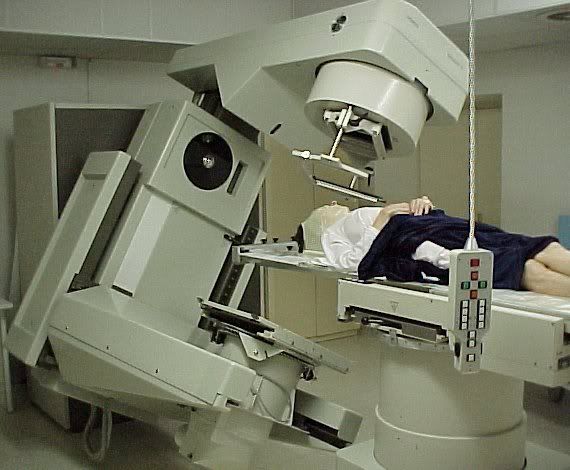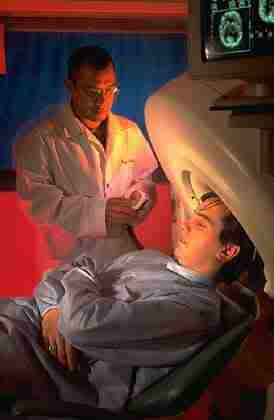Prevalence of Hypothyroidism and Graves Disease in Sarcoidosis.
Sarcoidosis is a multisystem disorder of unknown cause. The diagnosis is established when clinicoradiologic findings are supported by histologic evidence of noncaseating epithelioid cell granulomas; granulomas of known causes must be excluded.
The association of sarcoidosis (S) and thyroid autoimmunity has been reported by several studies, with a wide range of variability. However, from a review of the literature the following considerations arise:
(1) many studies do not have an appropriate control group to evaluate the relative risk of hypothyroidism;
(2) among the studies reporting a higher prevalence of thyroid autoimmunity in S patients than in control subjects, discrepant results have been reported about the prevalence of different antithyroid autoantibodies;
(3) a high prevalence of clinical thyroid dysfunction (ie, Hashimoto thyroiditis, often without reporting the results of thyroid hormone detection in the absence of levothyroxine treatment) has been reported by some studies, but it has not been found in others;
(4) thyroid ultrasonography that had been progressively becoming one of the most important tools for the diagnosis of thyroid disorders has been evaluated in S patients in only two studies;
(5) furthermore, no study has taken into account iodine intake, which is a major determinant of thyroid disorders and have not included a complete thyroid workup; and
(6) no study evaluated separately patients who were in treatment from patients who were not receiving corticosteroids, which are well-known immunosuppressive agents.
For other thyroid disorders, such as hyperthyroidism and Graves disease, central hypothyroidism, thyroid nodules, thyroid cancer, and S of the thyroid, only anecdotal reports are present in the literature. The aim of our study was to evaluate the prevalence of clinical and subclinical thyroid disorders in a wide group of patients with S by assessing thyroid morphology during ultrasound examination and by detecting thyroid hormones as well as the presence of antithyroid antibodies, and comparing their findings with those in a gender-matched (the prevalence of thyroid autoimmune disorders is four to eight times higher in women than in men) and age-matched control group from the same geographic area who had a well-defined iodine intake, which is a major determinant of thyroid function and morphology.
Discussion
Discrepant results have been reported about the prevalence of different antithyroid autoantibodies and hypothyroidism. The results of our study, using more tests and more sensitive methodology, in a larger group of 111 S patients who were matched by gender and age with 333 control subjects, who had a similar risk for iodine deficiency, demonstrated a significantly higher prevalence (5% and 17%, respectively) for clinical and subclinical hypothyroidism in female S patients than in control subjects. It should be stressed that the control group was a sample of the general population of central Italy, so the present series is a case-control study and not an epidemiologic survey. However, the prevalence of hypothyroidism in the female control subjects was substantial (7%), was fully in the range of the reported age-adjusted prevalence rates for the Italian population, and was similar to that (8%) of other population-based surveys. Interestingly, the mean TSH value was significantly higher in female S patients than in female control subjects, which is in agreement with other studies.
Autoimmune phenomena are often present in patients with S. The percentage of antithyroid antibodies ranged from 1.3 to 54.5% in different studies. This wide range may be at least partially explained by the application of steroids and immunosuppressive drugs in S patients, by the different gender and age composition, and by the iodine intake of S patients. In most of the studies, AbTg antibodies were more common than antimicrosomal antibodies, while in the more recent studies a higher prevalence of AbTPO was found. In our female control subjects, the prevalence of AbTPO positivity was 19%, which is fully in the range of the reported age-adjusted prevalence rates for the Italian population and for other population-based surveys, while in S patients the prevalence of AbTPO positivity was 34%, which is significantly higher. The prevalence of AbTg from population studies has been reported to be approximately 10% in female patients (range, 10 to 15%), which is similar to the prevalence observed in our female control subjects (15%), while in S patients the prevalence of AbTg positivity was 12%, which is not significantly different. Altogether, the above-mentioned data indicate a higher prevalence of thyroid autoimmunity in female S patients compared to female control subjects.
The presence of antithyroid antibodies was found in about two thirds of S patients with hypothyroidism. Moreover, hypothyroidism in S patients is significantly associated with a thyroid hypoechoic pattern and a small thyroid volume. These findings suggest that autoimmunity is very important in the pathogenesis of hypothyroidism and in S patients, and that ultrasonography is able to detect the morphologic alterations of thyroid tissue that are associated with a higher risk of hypothyroidism. Only one case of hypothyroidism with positive TRAb test results has been detected, suggesting that this association is not frequent.The incidence of hyperthyroidism in patients with S is unknown. In our study, a significantly higher prevalence of Graves disease, which is of clear autoimmune origin, was observed in female S patients, while no significant difference was observed for subclinical hyperthyroidism, which is mainly related to nodular goiter with functionally autonomous nodules. The diagnosis of clinical hypothyroidism and Graves disease in female S patients permitted us to promptly start the appropriate therapies, avoiding the consequences of prolonged thyroid dysfunction.
We did not find any case of central hypothyroidism or of euthyroid sick syndrome in S patients. In our S patients, FT4 and FT3 levels, thyroid volume, and the prevalence of thyroid nodules were not significantly different from those of control subjects.
Single reports of the association of S with thyroid cancer have been published. In our series of S patients, two cases of thyroid papillary cancer were detected, with a higher, even if not statistically significant, prevalence than control subjects. It is difficult to conclude that there is a pathogenetic link between S and neoplasia, although such an association has been suggested by some authors. However, our data suggest the need for a careful thyroid follow-up in S patients with thyroid nodules. No case of thyroid granulomatosis was observed, suggesting that this condition occurs infrequently in S patients.
The association of autoimmune disorders is a well-known phenomenon. The pathogenetic base of this association is under debate. However, much evidence accumulated from animal models and available in cases of human disease favors a prevalent T-helper type 1 lymphokine profile in the target organs of patients with S, such as those with thyroid autoimmune disorders. This T-helper type 1 lymphokine prevalence, under the combined action of genetic and environmental conditions, may involve different organs in the same subject, with the appearance of multiple immune-mediated disorders, leading to different clinical disorders.
In conclusion, the results of our study in a large group of S patients demonstrate that female patients had a significantly higher prevalence of AbTPOs, ultrasonographic findings of thyroid autoimmunity, clinical and subclinical hypothyroidism, and Graves disease than did a very large group of control subjects with a similar iodine status. Thyroid function should be tested and ultrasonography performed as part of the clinical profile in female S patients. Those patients who are at high risk (ie, female patients, patients with, and patients who are positive AbTPOs, are hypoechoic and have a small thyroid) should have thyroid function follow-up and appropriate treatment in due course.
Conclusions:
Thyroid function, AbTPO antibodies, and ultrasonography should be tested as part of the clinical profile in female S patients. Subjects who are at high risk (female subjects, those with positive AbTPOs, and those with hypoechoic and small thyroid) should have thyroid function follow-up and appropriate treatment in due course.




1 Comments:
I have low thyroid (hypothyroidism) and bovine supplement makes me feel so alert and has helped me lose weight. I also exercise but the product has helped me decrease weight. I tried other supplement but ended up going back to porcine thyroid capsules!
Post a Comment
<< Home